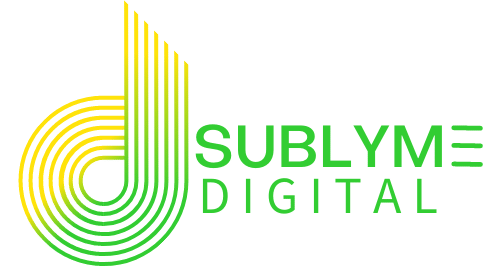Maximize Business Success with Essential Google Ads Strategies
Google Ads has revolutionized the landscape of online advertising, offering businesses a powerful platform to reach their target audience with precision and efficiency. As a cornerstone of digital marketing, mastering Google Ads involves understanding its key components: campaigns, ad groups, and individual ads. These elements, when strategically managed, can significantly enhance your advertising strategies, drive higher conversion rates, and increase your return on investment. In this comprehensive guide, we will delve into essential strategies for structuring and optimizing your Google Ads campaigns, ensuring you unlock their full potential for business success.
Mastering Google Ads Structure
Campaigns: Backbone of Strategy
Campaigns form the backbone of your Google Ads strategy. They serve as the overarching structure where you organize your advertising efforts around specific business objectives or themes. By defining clear goals—such as increasing brand awareness, driving traffic to your website, or boosting sales—you can allocate budgets strategically and monitor performance effectively. Each campaign can be customized to focus on different aspects of your business, ensuring that your advertising efforts align with your overall marketing strategy. Moreover, campaigns allow you to track performance metrics, evaluate results, and make data-driven decisions to optimize your ad spend. Structuring your Google Ads account with well-defined campaigns not only streamlines your advertising efforts but also enhances your ability to reach targeted audiences efficiently. Understanding how to leverage campaigns effectively is crucial in maximizing your return on investment and achieving your business goals through precise and impactful advertising strategies.
Ad Groups: Precision Targeting
Ad groups play a crucial role in enhancing the precision of your Google Ads campaigns. Within each campaign, ad groups allow you to further segment your audience and organize your ads around specific themes or product categories. By grouping related keywords and ads together, you can deliver more relevant messaging to distinct segments of your target audience. This targeted approach not only improves the quality score of your ads but also potentially reduces costs and enhances ad placement effectiveness. Precision targeting through ad groups ensures that your messaging resonates with the right audience, increasing the likelihood of clicks and conversions. Additionally, well-structured ad groups enable you to test different strategies and refine your approach based on performance data. This level of organization is essential for businesses aiming to optimize their pay-per-click (PPC) advertising efforts and achieve higher conversion rates, ultimately driving the success of their digital marketing strategies.
Ads: Crafting Compelling Content
The ads themselves are the core of your Google Ads strategy, acting as the primary interface between your brand and potential customers. Crafting compelling content is essential for capturing attention and driving conversions. Your ads should be concise yet impactful, designed to resonate with your target audience’s needs and interests. Effective ad copy incorporates strong calls-to-action, relevant keywords, and engaging visuals to enhance click-through rates and conversion rates. Tailoring your message to address specific pain points or desires of your audience can significantly boost engagement. Furthermore, experimenting with different formats—such as responsive search ads or display ads—can help you determine what resonates best with your audience. By continuously testing and optimizing ad content based on performance data, you can refine your approach to achieve better results. Remember, compelling ads are not just about creativity; they are about delivering the right message to the right people at the right time, maximizing your return on investment.
Benefits of Professional Management by Sublyme
Strategic Planning and Execution
Strategic planning and execution are fundamental to the success of any Google Ads campaign, and professional management brings expertise in these areas. Professionals begin by aligning your digital marketing goals with tailored strategies that cater to your target audience and business objectives. This involves comprehensive keyword research to identify the most effective terms and phrases that will attract the right audience to your ads. With a well-defined strategy in place, professionals can execute campaigns with precision, ensuring that every dollar of your ad spend is optimized for maximum return on investment. Moreover, they continuously monitor and adjust campaigns based on performance data, fine-tuning ad copy, targeting, and bidding strategies to enhance outcomes. This level of strategic oversight and execution reduces wasted spend and increases the effectiveness of your advertising strategies. In essence, professional management provides the expertise and strategic insights needed to drive successful online advertising campaigns, ultimately leading to better conversion rates and business growth.
Continuous Performance Monitoring
Continuous performance monitoring is a critical advantage of professional management in Google Ads campaigns. By employing dedicated resources to track campaign performance, professionals can swiftly identify trends and areas for improvement. This ongoing analysis involves monitoring key metrics such as click-through rates, conversion rates, and cost-per-click to evaluate the effectiveness of your advertising strategies. With real-time data insights, professionals can make informed adjustments to targeting, ad copy, and bidding strategies to enhance campaign performance. This proactive approach helps in mitigating potential issues before they impact your budget or results. Furthermore, continuous monitoring allows for A/B testing of different ad variations and strategies, enabling optimization based on concrete evidence rather than assumptions. By leveraging data-driven insights, professional management ensures that your campaigns remain agile and effective, maximizing your return on investment. In summary, continuous performance monitoring is essential for maintaining and improving the efficiency and success of your digital marketing efforts.
Data-Driven Insights and Reporting
Data-driven insights and reporting are key components of professional management in Google Ads. By leveraging advanced analytics tools, professionals can extract valuable insights from campaign data, transforming raw numbers into actionable strategies. These insights help in understanding audience behavior, identifying high-performing keywords, and evaluating the overall effectiveness of ad campaigns. Regular reporting provides a clear view of progress toward business objectives, presenting data in an easy-to-understand format that highlights key metrics and trends. This transparency allows businesses to make informed decisions and adjust their strategies to improve outcomes continuously. Furthermore, detailed reports enable the identification of growth opportunities and pinpoint areas that require optimization. By utilizing data-driven insights, professional management ensures that your advertising efforts are aligned with your business goals and are consistently optimized for better performance. Ultimately, this approach enhances accountability and drives more effective resource allocation, leading to improved return on investment in your digital marketing endeavors.



